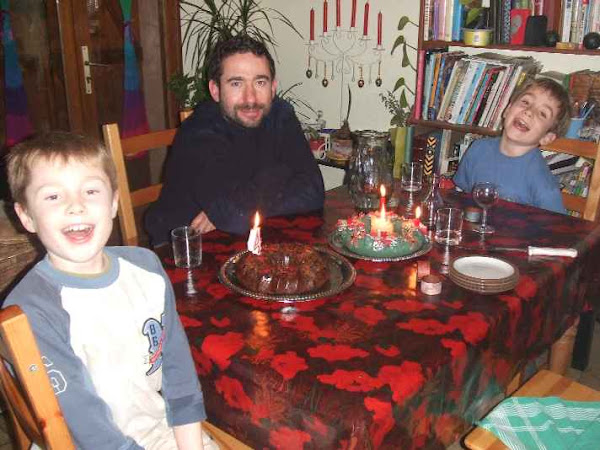Just over two years later, we headed quite deliberately to the end of the pilgrimage - Santiago de Compostela itself. You can see my photos of the Baroque frontage of the cathedral in my previous post.
Ben and I paid to go up into the museums which take up some of the rooms around the cathedral, and I snapped this photo of pilgrims and tourists together in the square. You can spot the pilgrims because most of them are lying down! They have had to walk at least 100 kilometers to get there, or cycle 200, and most of them had probably done more. You can see a huge pile of rucsacs in the middle of my photo, with a few pilgrims watching them as their fellows head off - maybe into the cathedral, or maybe into the well-stocked city pharmacies, which advertise a great range of foot-care products!
The sense of arrival must be wonderful. The Catholic pilgrims go to confession and mass, and everyone mills around in the cathedral, which has quite a sense of bustle and awe, probably as it has done for the last thousand years. This photo shows you what you can see there:
But this photo gives you a much better feel of the place!
Whisper, crackle, shuffle, bustle, shhhh, shuffle, bustle... it's a fascinating place.
But when you think that you have come to the end of the pilgrim route, it turns out you are wrong. THIS is the end of the road - the end of the world - Finisterre!
Pilgrims traditionally continued walking until they got to the true end of the road, on the blustery cape of Fisterra, or Finisterre.
There they burnt their pilgrim clothes - Son 2 is investigating the site of a very recent fire, composed mostly of boots, he informed us.
Nowadays, as well as pilgrims and tourists, there is a lighthouse and a radio mast.
The sign says 'Do not leave clothes on this radio mast' in many pilgrim languages...
The town of Fisterra is just tucked into a bay behind the cape. Here the pilgrims stopped in medieval times to pick up the scallop shell which would show the world that they had completed their holy travels. And here Son 2 dived in the cold, cold waters of the Atlantic and found...
















.jpg)








































































































